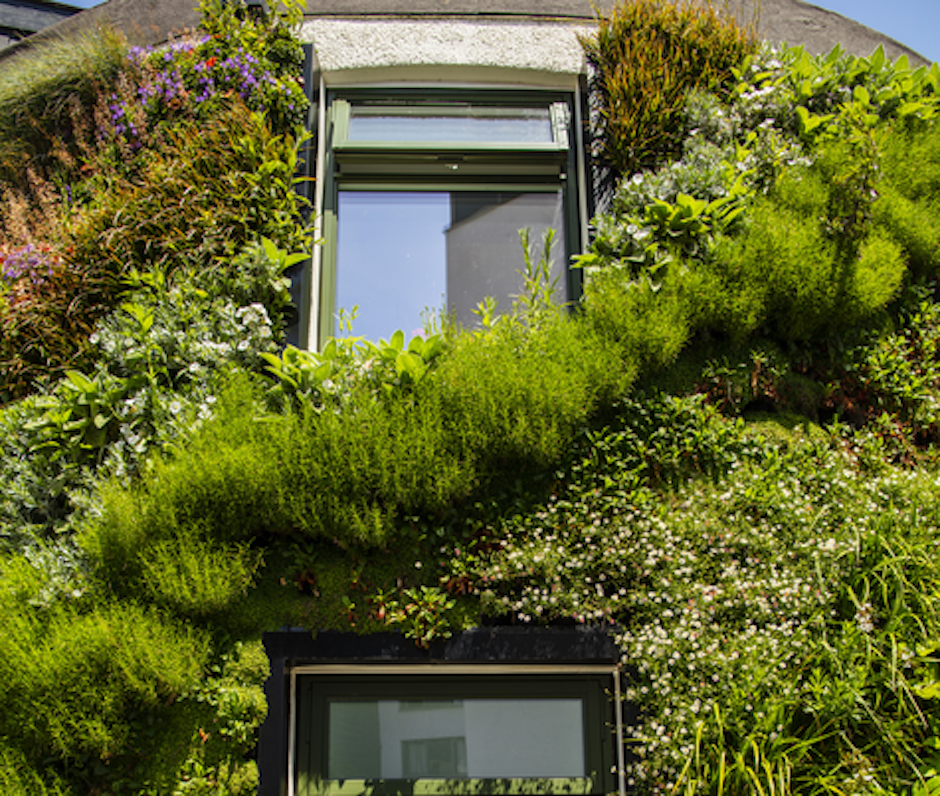
The study was centred around the university’s Sustainability Hub, and compared how effectively two sections of its walls retained heat.
Despite being on the same west-facing elevation, one of those sections had been retrofitted with an exterior living wall facade, comprised of a flexible felt fabric sheet system with pockets allowing for soil and planting.
After five weeks of measurements, researchers found the amount of heat lost through the ‘living’ wall was 31.4 per cent lower than that of the original structure.
They also discovered daytime temperatures within the newly-covered section remained more stable than the area with exposed masonry.
Published in Building and Environment, the study is one of the first to ascertain the thermal influence of living wall systems on existing buildings in temperate scenarios. It was conducted by academics at the university’s Sustainable Earth Institute.
Whilst the concept is relatively new, researchers said it shows a host of benefits such as added biodiversity.
Buildings directly account for 17 per cent of UK greenhouse gas emissions and space heating accounts for over 60 per cent of all energy used in buildings. Researchers believe the findings could be a ‘game-changer’ in helping meet net zero targets.
“Within England, approximately 75 per cent [of] all buildings were built before 1964,” said Dr Matthew Fox, lead author of the study. “While regulations have changed more recently to improve the thermal performance of new constructions, it is our existing buildings that require the most energy to heat and are a significant contributor to carbon emissions.
“It is therefore essential that we begin to improve the thermal performance of these existing buildings, if the UK is to reach its target of net zero carbon emission by 2050, and help to reduce the likelihood of fuel poverty from rising energy prices.”
The study’s findings are being taken forward as part of the university’s Sustainability Hub: Low Carbon Devon project. Supported by an investment from the European Regional Development Fund (ERDF), the three-year £2.6m programme explores low carbon solutions through research and support for local enterprises.
Specifically, this aspect looks to optimise the performance and sustainability of external living walls in sustainable building design through research on thermal properties, and carbon sequestration, offered by different plant and soil types.




Swiss geoengineering start-up targets methane removal
No mention whatsoever about the effect of increased methane levels/iron chloride in the ocean on the pH and chemical properties of the ocean - are we...